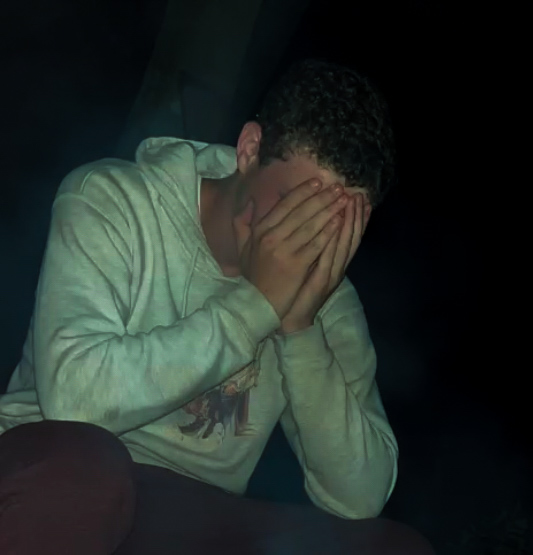With the normalization of mental health issues across social media, many terms have been watered down, creating a wild oscillation between stigmatizing mental health struggles and mental illness and wearing it like a badge of honor. For example, terms like intrusive thoughts, manic episodes, delusion, OCD, and gaslighting (etc.) have been appropriated to mean something else, which makes it difficult for those who actually experience them to be taken seriously by medical professionals, family, and friends.
Above all, depression and anxiety are two terms that are being thrown around excessively in this way, especially from grades 6-12, which is more dangerous than it is annoying. And while some people are not aware that they are appropriating a term, in my experience, they refuse to acknowledge the actual definition when corrected. So, here is a quick guide to what depression and anxiety actually are and why appropriating the terms associated with them is wrong.
The two most common types of depression are situational depression, also known as reactive depression, and clinical depression, or Major Depressive Disorder (MDD). Situational depression is short-term (lasting weeks to months), and is caused by a series of traumatic events. It’s considered to be an adjustment disorder, which means that it is a reaction to a traumatic event or change in someone’s life that leads to the disorder. MDD can be influenced by situation. However, it is mainly an issue with neurotransmitters in the brain having a chemical disruption.
Situational depression shares some symptoms with MDD, such as fatigue, insomnia, anxiety, loss of appetite, loss of concentration, and frequent crying. MDD, however, has a much more severe impact and is characterized by at least two weeks of a constant state of depression (depressive mood), a loss of interest in normal activities and relationships, and can interfere with every aspect of a person’s life. Furthermore, it can be caused by severe trauma, substance abuse, or genetics, whereas situational depression is not caused by genetic factors. People who already have another mental illness, such as anxiety, are more prone to clinical depression than others, even if both experience the same traumatic event. Clinical depression symptoms include fatigue and loss of appetite but also include a feeling of guilt, worthlessness, decreased interest in things that formerly brought joy, and suicidal thoughts. Though both forms of the disorder can have similar symptoms, a person with situational depression may show more signs of grief and sadness, and someone with clinical depression may not show any emotion at all. You can read more on the difference between types of depression here.

As for anxiety, the most common type is generalized anxiety disorder or GAD. GAD is diagnosed by excessive worrying, or worrying for most days over a period of at least six months. Worrying can be defined as being over-concerned about something, or a feeling of panic for seemingly no reason, or over something small. The most common symptoms are trouble falling or staying asleep, trembling, twitching, tense muscles, headaches, irritability, sweating/ hot flashes, difficulty breathing, nausea, fatigue, poor concentration, being easily startled, inability to relax, etc. Even if people experience many or all of these symptoms, that may not mean they have GAD. They should consult a medical professional for a diagnosis. GAD can run in families and affects the parts of the brain responsible for fear and anxiety, making them more excitable, and making it more difficult to manage internal stress. It can be genetic, situational, or a side effect of substance abuse, medication, or other medical conditions.
Another type of anxiety is panic disorder, which is characterized by frequent and unexpected panic attacks. Here is where it’s important to note the difference between panic attacks and anxiety attacks because they look very different. An anxiety attack is a sudden wave of anxiety. Observers may not be able to tell that someone is experiencing an anxiety attack from the outside, and with proper counseling coupled with medication, if necessary, they can become manageable. Panic attacks, however, are different. They are characterized by a feeling of dying, or loss of control, as well as difficulties breathing/hyperventilating and heart attack-like symptoms. Panic attacks do not have a clear danger or trigger. That being said, if a person is a victim of SA and sees someone who looks like their abuser, it can trigger a panic attack. However, the clear trigger of seeing that person means that the panic attack was not a result of a panic disorder. People with panic disorder often times avoid going outside out of fear they will have another panic attack, and the condition can be detrimental to other areas of a person’s mental health. Having one or two panic attacks does not mean they are caused by a panic disorder, even if they are unprompted. Again, speak to a medical professional if you suspect you have panic disorder.
Like depression, anxiety disorders can be treated with SSRIs, talk therapy, and lifestyle changes.
An SSRI, or select serotonin reuptake inhibitor, is the most common type of drug used to treat depression and anxiety. Some of the most common are Sertraline (Zoloft) and Escitalopram (Lexapro). Depression is not a deficiency in serotonin, which is a neurotransmitter in the body commonly associated with mood. With depression, a person’s brain cannot hold onto serotonin in the brain for long enough, so, SSRIs act as a way to keep the serotonin there longer, rather than acting as a replacement for serotonin.
These are just a few, topical examples of terms that are being thrown around. It’s frustrating and dangerous when these terms are appropriated or used as an excuse or scapegoat by people who are self-diagnosed (undiagnosed, but self-proclaimed), because it contributes to the stigma against people with mental illness as being incapable of living normal lives. It also makes it more difficult for people who experience symptoms to get help because medical professionals are less likely to take them seriously when they use terms that have been brought into the mainstream and appropriated. Likewise, it’s difficult for them to distinguish whether a patient is really experiencing intrusive thoughts (for example, seeing a knife and having the thought of cutting your fingers off stuck in your head), or if they mean they sometimes have spontaneous thoughts, such as cutting their hair or getting a tattoo out of nowhere.
There’s a difference between slang and appropriation. There is little to no harm in saying ‘This gives me so much serotonin’ instead of dopamine, the chemical that is actually responsible for happiness, since it doesn’t have a negative impact on the language used around mental health. However, there’s harm in saying ‘I let my intrusive thoughts win and dyed my hair’ since that is not an intrusive thought, and takes away the meaning and impact of the word.
The links throughout this article include resources on what to do if you suspect you may have any of the conditions listed. Alternatively, you can reach out to your guidance counselor or doctor about your concerns.
The suicide and crisis lifeline is 988 to call, or 988lifeline.org to chat.


